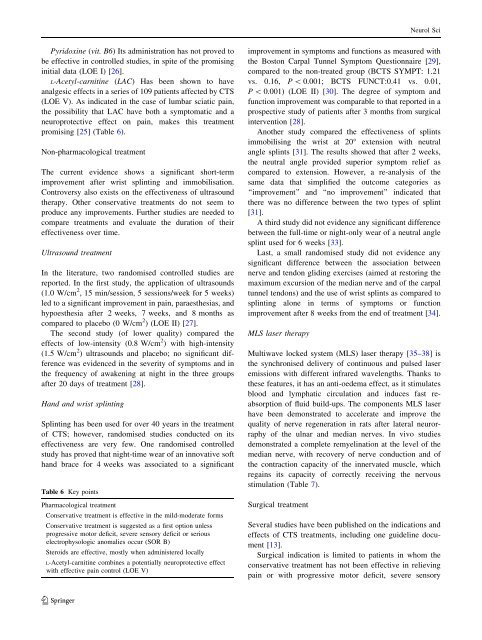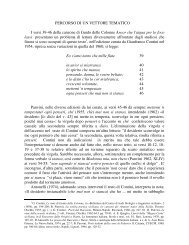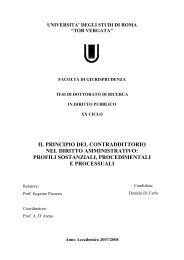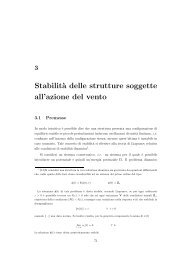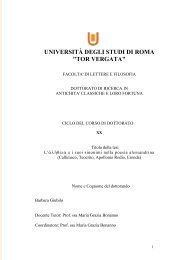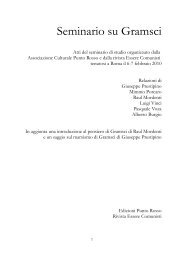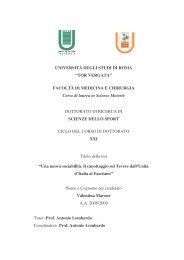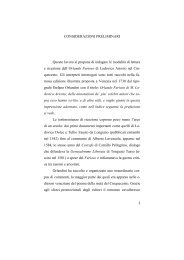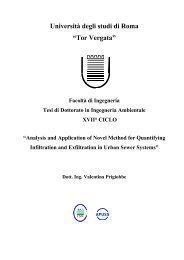Diagnosis, treatment and follow-up of the carpal ... - Home page | ART
Diagnosis, treatment and follow-up of the carpal ... - Home page | ART
Diagnosis, treatment and follow-up of the carpal ... - Home page | ART
Create successful ePaper yourself
Turn your PDF publications into a flip-book with our unique Google optimized e-Paper software.
Pyridoxine (vit. B6) Its administration has not proved to<br />
be effective in controlled studies, in spite <strong>of</strong> <strong>the</strong> promising<br />
initial data (LOE I) [26].<br />
L-Acetyl-carnitine (LAC) Has been shown to have<br />
analgesic effects in a series <strong>of</strong> 109 patients affected by CTS<br />
(LOE V). As indicated in <strong>the</strong> case <strong>of</strong> lumbar sciatic pain,<br />
<strong>the</strong> possibility that LAC have both a symptomatic <strong>and</strong> a<br />
neuroprotective effect on pain, makes this <strong>treatment</strong><br />
promising [25] (Table 6).<br />
Non-pharmacological <strong>treatment</strong><br />
The current evidence shows a significant short-term<br />
improvement after wrist splinting <strong>and</strong> immobilisation.<br />
Controversy also exists on <strong>the</strong> effectiveness <strong>of</strong> ultrasound<br />
<strong>the</strong>rapy. O<strong>the</strong>r conservative <strong>treatment</strong>s do not seem to<br />
produce any improvements. Fur<strong>the</strong>r studies are needed to<br />
compare <strong>treatment</strong>s <strong>and</strong> evaluate <strong>the</strong> duration <strong>of</strong> <strong>the</strong>ir<br />
effectiveness over time.<br />
Ultrasound <strong>treatment</strong><br />
In <strong>the</strong> literature, two r<strong>and</strong>omised controlled studies are<br />
reported. In <strong>the</strong> first study, <strong>the</strong> application <strong>of</strong> ultrasounds<br />
(1.0 W/cm 2 , 15 min/session, 5 sessions/week for 5 weeks)<br />
led to a significant improvement in pain, paraes<strong>the</strong>sias, <strong>and</strong><br />
hypoes<strong>the</strong>sia after 2 weeks, 7 weeks, <strong>and</strong> 8 months as<br />
compared to placebo (0 W/cm 2 ) (LOE II) [27].<br />
The second study (<strong>of</strong> lower quality) compared <strong>the</strong><br />
effects <strong>of</strong> low-intensity (0.8 W/cm 2 ) with high-intensity<br />
(1.5 W/cm 2 ) ultrasounds <strong>and</strong> placebo; no significant difference<br />
was evidenced in <strong>the</strong> severity <strong>of</strong> symptoms <strong>and</strong> in<br />
<strong>the</strong> frequency <strong>of</strong> awakening at night in <strong>the</strong> three gro<strong>up</strong>s<br />
after 20 days <strong>of</strong> <strong>treatment</strong> [28].<br />
H<strong>and</strong> <strong>and</strong> wrist splinting<br />
Splinting has been used for over 40 years in <strong>the</strong> <strong>treatment</strong><br />
<strong>of</strong> CTS; however, r<strong>and</strong>omised studies conducted on its<br />
effectiveness are very few. One r<strong>and</strong>omised controlled<br />
study has proved that night-time wear <strong>of</strong> an innovative s<strong>of</strong>t<br />
h<strong>and</strong> brace for 4 weeks was associated to a significant<br />
Table 6 Key points<br />
Pharmacological <strong>treatment</strong><br />
Conservative <strong>treatment</strong> is effective in <strong>the</strong> mild-moderate forms<br />
Conservative <strong>treatment</strong> is suggested as a first option unless<br />
progressive motor deficit, severe sensory deficit or serious<br />
electrophysologic anomalies occur (SOR B)<br />
Steroids are effective, mostly when administered locally<br />
L-Acetyl-carnitine combines a potentially neuroprotective effect<br />
with effective pain control (LOE V)<br />
123<br />
improvement in symptoms <strong>and</strong> functions as measured with<br />
<strong>the</strong> Boston Carpal Tunnel Symptom Questionnaire [29],<br />
compared to <strong>the</strong> non-treated gro<strong>up</strong> (BCTS SYMPT: 1.21<br />
vs. 0.16, P \ 0.001; BCTS FUNCT:0.41 vs. 0.01,<br />
P \ 0.001) (LOE II) [30]. The degree <strong>of</strong> symptom <strong>and</strong><br />
function improvement was comparable to that reported in a<br />
prospective study <strong>of</strong> patients after 3 months from surgical<br />
intervention [28].<br />
Ano<strong>the</strong>r study compared <strong>the</strong> effectiveness <strong>of</strong> splints<br />
immobilising <strong>the</strong> wrist at 20° extension with neutral<br />
angle splints [31]. The results showed that after 2 weeks,<br />
<strong>the</strong> neutral angle provided s<strong>up</strong>erior symptom relief as<br />
compared to extension. However, a re-analysis <strong>of</strong> <strong>the</strong><br />
same data that simplified <strong>the</strong> outcome categories as<br />
‘‘improvement’’ <strong>and</strong> ‘‘no improvement’’ indicated that<br />
<strong>the</strong>re was no difference between <strong>the</strong> two types <strong>of</strong> splint<br />
[31].<br />
A third study did not evidence any significant difference<br />
between <strong>the</strong> full-time or night-only wear <strong>of</strong> a neutral angle<br />
splint used for 6 weeks [33].<br />
Last, a small r<strong>and</strong>omised study did not evidence any<br />
significant difference between <strong>the</strong> association between<br />
nerve <strong>and</strong> tendon gliding exercises (aimed at restoring <strong>the</strong><br />
maximum excursion <strong>of</strong> <strong>the</strong> median nerve <strong>and</strong> <strong>of</strong> <strong>the</strong> <strong>carpal</strong><br />
tunnel tendons) <strong>and</strong> <strong>the</strong> use <strong>of</strong> wrist splints as compared to<br />
splinting alone in terms <strong>of</strong> symptoms or function<br />
improvement after 8 weeks from <strong>the</strong> end <strong>of</strong> <strong>treatment</strong> [34].<br />
MLS laser <strong>the</strong>rapy<br />
Multiwave locked system (MLS) laser <strong>the</strong>rapy [35–38] is<br />
<strong>the</strong> synchronised delivery <strong>of</strong> continuous <strong>and</strong> pulsed laser<br />
emissions with different infrared wavelengths. Thanks to<br />
<strong>the</strong>se features, it has an anti-oedema effect, as it stimulates<br />
blood <strong>and</strong> lymphatic circulation <strong>and</strong> induces fast reabsorption<br />
<strong>of</strong> fluid build-<strong>up</strong>s. The components MLS laser<br />
have been demonstrated to accelerate <strong>and</strong> improve <strong>the</strong><br />
quality <strong>of</strong> nerve regeneration in rats after lateral neurorraphy<br />
<strong>of</strong> <strong>the</strong> ulnar <strong>and</strong> median nerves. In vivo studies<br />
demonstrated a complete remyelination at <strong>the</strong> level <strong>of</strong> <strong>the</strong><br />
median nerve, with recovery <strong>of</strong> nerve conduction <strong>and</strong> <strong>of</strong><br />
<strong>the</strong> contraction capacity <strong>of</strong> <strong>the</strong> innervated muscle, which<br />
regains its capacity <strong>of</strong> correctly receiving <strong>the</strong> nervous<br />
stimulation (Table 7).<br />
Surgical <strong>treatment</strong><br />
Neurol Sci<br />
Several studies have been published on <strong>the</strong> indications <strong>and</strong><br />
effects <strong>of</strong> CTS <strong>treatment</strong>s, including one guideline document<br />
[13].<br />
Surgical indication is limited to patients in whom <strong>the</strong><br />
conservative <strong>treatment</strong> has not been effective in relieving<br />
pain or with progressive motor deficit, severe sensory


